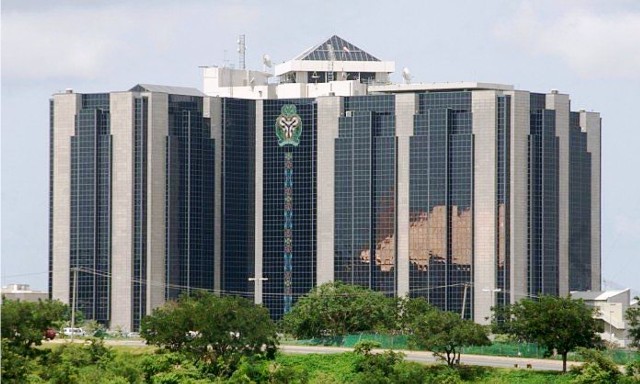Opinion
Mrs Amaechi And Women Empowerment
Women have a major role to play in the promotion of national development especially in the rural communities. As the focus of the family and as homemakers and cultivators, their contributions to the survival and progress of our society are tremendous.
It is in the light of this that many people have viewed the initiative of the wife of the Rivers State governor, Mrs. Dame Judith Amaechi to empower the women and youths of the state by equipping them for modern farming with interest.
As stated by the First lady and founder of Empowerment Support Initiative (ESD): “we have acquired about 60 plots of land to enable us begin training of our women and youths in modern farming skills and technology and these lands will have a demonstration farm and modern farm facility including green houses to enable us have higher yields”. By the initiative, plans have already been made for over 2,500 women to benefit from the first phase of the project.
If this initiative is well planned, co-ordinated, and executed, it will achieve several developmental objectives for the state. As indicated by the governor’s wife, the programme will provide gainful empowerment and employment for women and youths. But significantly, the scheme will educe modernisation in our agricultural practice which will bring about an increase in productive power and changes in the attitudes of our women and youths, replacing a sense of dependence on the natural envrioment. It will thus establish an economic base for the women and youths and generate progressively higher levels of output and living for the state.
Besides, the programme will narrow the gap between the opportunities of rural women and youths on one hand, and those of the employed and well-to-do urban population on the other hand.
So before the training programme for the scheme kicks off in the next few weeks, the scope of the entire project should be expanded to include some other vital areas of agricultural activities in the state. Such areas include cassava processing, grass cutter farming, snail farming, fish farming, processing, and preservation, periwenkle farming, and new methods of growing maize and other crops. Others are goat milking, rabbit rearing, turkey farming, chicks hatching, and production of table birds (broilers).
Though the state is very well endowed with several streams, creeks, ponds, wildlife, arable land and friendly climate for agricultural production, adequate attention has not been directed, especially in recent times, to food production and processing. Even with cassava that is in reasonable supply in the state, no concerted effort has been made to process it industrially. Over the years, the production of garri from cassava has been done traditionally by women and their children or youths in their homes.
The traditional method of garri production is time consuming, unhygienic, and on a small scale. Therefore, it can not produce enough garri to feed the teeming population of those who eat it as their staple food.
The scheme should therefore include in its programme, training of women on industrial garri production to upgrade the village method to a modern one which covers peeling and grating of cassava tubers, de-watering, toasting, sieving and packaging. In the industrial garri production, the whole process is automated.
Fish farming is another agricultural activity that can easily empower the women and youths. It is a lucrative business which can be practised in marine, brackish or fresh water, and apart from ponds, tanks and reservoirs can be used for the venture. Since it can be practised on a small, medium or large-scale level, women can quite easily fit the business into their financial capacity and managerial ability.
Certainly, if many women and youths are trained in fish farming, more employment opportunities will be created for the rural and even urban dwellers, their incomes will increase and diet will improve.
For the women and youths in the riverine areas, training them on periwinkle farming will also be a welcome development. Though periwinkles are abundant in the brackish water mangrove belt of the Niger Delta, women and youths harvest them by hand-picking during low water.
Periwinkle farming is another lucrative venture that will empower our women and children. Considering that it is nutritionally richer than fish or meat, its demand and consumption are increasing steadily and rapidly.
But for Mrs. Amaechi to succeed in this laudable programme, she must take certain critical factors about the state’s rural communities and people into consideration. The foremost one is that the illiteracy rate among the women is very high. The type of training to be given to them should therefore be well thought out.
It should also be noted that the very nature of the process of women and youth empowerment require that action be taken on several fronts simultaneously and not independently of each other.
This implies that the programmes of agriculture, education, and training, health and nutrition, rural electrification, co-operatives, water supply and road construction should be integrated and delivered as a package and not planned and implemented each in isolation.
Worse still, it is difficult to assess the desire or willingness of the women and youths to grow with the programme in the long run. Why? Because, in the past, beneficiaries of similar programmes have perceived them as other ways of taking their own share of the national cake. And the initiators of such programmes had, often, created them to fulfill dramatic short term needs, expectations, and promises.
Mrs. Amaechi’s efforts of empowering the women and youths of the state should therefore not be seem by the beneficiaries as an action to simply support them or make them dependent on the generosity of government; it should be seen as an action to give them a chance of developing the skills and talents that will help them become self-reliant and serve as dependable force for the modernisation of the agricultural sector in the state.
Opinion
Ndifon’s Verdict and University Power Reform

Opinion
As Nigeria’s Insecurity Rings Alarm

Opinion
The Girl Who Didn’t Dance
-
Business2 days ago
Shippers Council Vows Commitment To Security At Nigerian Ports
-

 Business2 days ago
Business2 days agoCBN Revises Cash Withdrawal Rules January 2026, Ends Special Authorisation
-

 Business2 days ago
Business2 days agoNigeria Risks Talents Exodus In Oil And Gas Sector – PENGASSAN
-
Business2 days ago
NCDMB, Others Task Youths On Skills Acquisition, Peace
-

 Business2 days ago
Business2 days agoFIRS Clarifies New Tax Laws, Debunks Levy Misconceptions
-

 Politics2 days ago
Politics2 days agoTinubu Increases Ambassador-nominees to 65, Seeks Senate’s Confirmation
-
Sports2 days ago
Obagi Emerges OML 58 Football Cup Champions
-

 News2 days ago
News2 days agoTinubu Swears In Christopher Musa As Defence Minister

